Foundation Year
The English curriculum is built around the three interrelated strands of language, literature and literacy. Teaching and learning programs should balance and integrate all three strands. Together, the three strands focus on developing students' knowledge, understanding and skills in listening, reading, viewing, speaking, writing and creating. Learning in English builds on concepts, skills and processes developed in earlier years, and teachers will develop and strengthen these as needed.
In the Foundation year, students communicate with peers, teachers, known adults and students from other classes.
Students engage with a variety of texts for enjoyment. They listen to, read and view spoken, written and multimodal texts in which the primary purpose is to entertain, as well as some texts designed to inform. These include traditional oral texts, picture books, various types of stories, rhyming verse, poetry, non-fiction, film, multimodal texts and dramatic performances. They participate in shared reading, viewing and storytelling using a range of literary texts, and recognise the entertaining nature of literature.
The range of literary texts for Foundation to Year 10 comprises Australian literature, including the oral narrative traditions of Aboriginal and Torres Strait Islander Peoples, as well as the contemporary literature of these two cultural groups, and classic and contemporary world literature, including texts from and about Asia. Literary texts that support and extend Foundation students as beginner readers include decodable and predictable texts that range from caption books to books with one or more sentences per page. These texts involve straightforward sequences of events and everyday happenings with recognisable, realistic or imaginary characters. Informative texts present a small amount of new content about familiar topics of interest; a small range of language features, including simple and compound sentences; mostly familiar vocabulary, known, high-frequency words and single-syllable words that can be decoded phonically, and illustrations that strongly support the printed text.
Students create a range of imaginative, informative and persuasive texts including pictorial representations, short statements, performances, recounts and poetry.
(source: www.australiancurriculum.edu.au)
Achievement Standard
Receptive modes (listening, reading and viewing)
By the end of the Foundation year, students use predicting and questioning strategies to make meaning from texts. They recall one or two events from texts with familiar topics. They understand that there are different types of texts and that these can have similar characteristics. They identify connections between texts and their personal experience.
They read short, decodable and predictable texts with familiar vocabulary and supportive images, drawing on their developing knowledge of concepts of print, sounds and letters and decoding and self-monitoring strategies. They recognise the letters of the English alphabet, in upper and lower case and know and use the most common sounds represented by most letters. They read high-frequency words and blend sounds orally to read consonant-vowel-consonant words. They use appropriate interaction skills to listen and respond to others in a familiar environment. They listen for rhyme, letter patterns and sounds in words.
Productive modes (speaking, writing and creating)
Students understand that their texts can reflect their own experiences. They identify and describe likes and dislikes about familiar texts, objects, characters and events.
In informal group and whole class settings, students communicate clearly. They retell events and experiences with peers and known adults. They identify and use rhyme, and orally blend and segment sounds in words. When writing, students use familiar words and phrases and images to convey ideas. Their writing shows evidence of letter and sound knowledge, beginning writing behaviours and experimentation with capital letters and full stops. They correctly form known upper- and lower-case letters.
(source: www.australiancurriculum.edu.au)
- Plus Plan
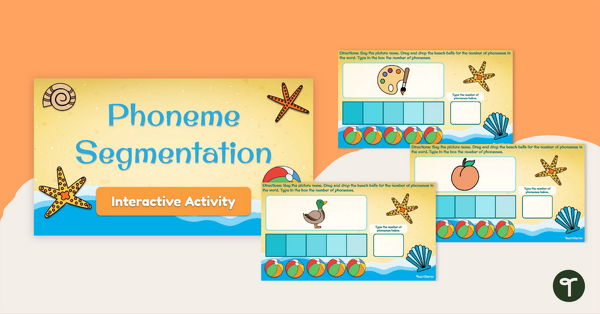
Beach-Themed Phoneme Segmentation Interactive Activity
Practise breaking words into their phonemes with this fun beach-themed interactive activity.
- Plus Plan
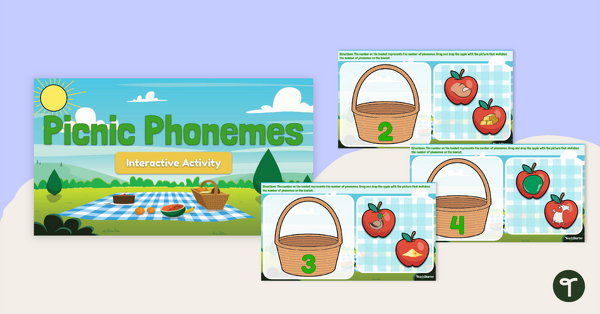
Picnic Phonemes - Phoneme Segmentation Interactive Activity
Practise breaking words into their phonemes with this fun picnic-themed interactive activity.
- Plus Plan
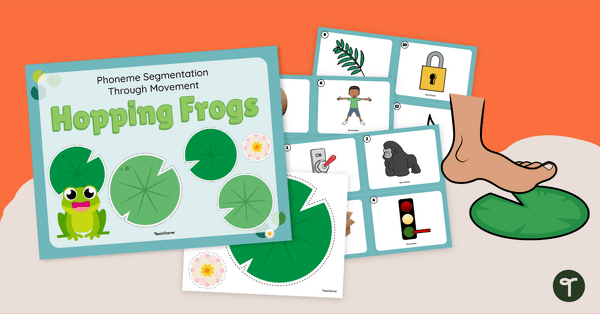
Phoneme Segmentation Activity - Hopping on Lily Pads
Jump the lilypads to practise segmenting 2, 3 and 4 phoneme words.
- Plus Plan

Break It Up! 2-Phoneme Word Segmentation Task Cards
Practise breaking down words with 2 phonemes into their sounds with this set of 18 task cards.
- Plus Plan
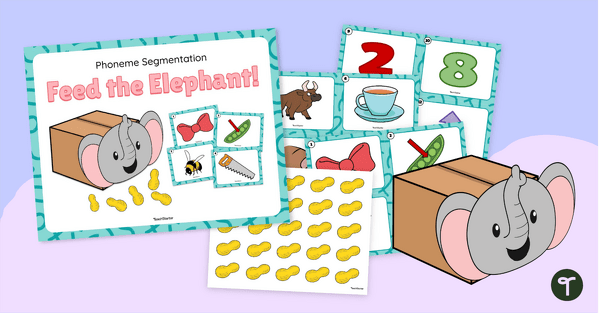
Phoneme Segmenting Activity – Feed the Elephant
Practise segmenting 2, 3 and 4 phoneme words verbally by feeding the elephant a peanut per phoneme.
- Plus Plan

How Many Candles? Phoneme Counting Interactive Activity
Practise breaking words into their phonemes with this fun cupcake-themed interactive activity.
- Plus Plan

Blending Phonemes - Word Puzzles
Practise blending sounds to encode and decode words with these hands-on word puzzles.
- Plus Plan
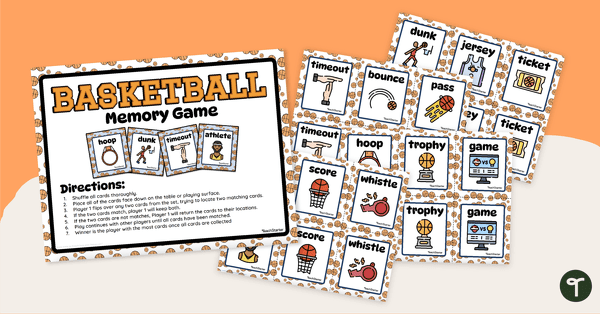
Basketball Memory Game
Boost vocabulary skills with a fun basketball-themed Memory game.
- Plus Plan
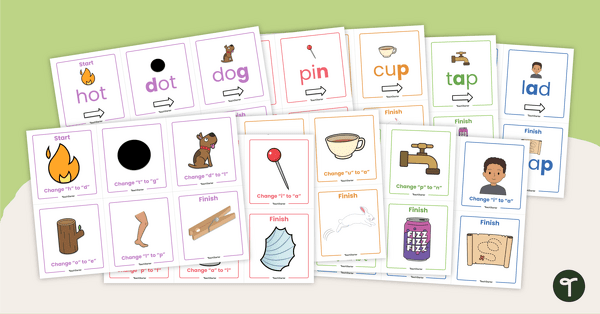
CVC Word Chain Sequencing Cards
Practise building word chains involving CVC words with these word chain sequencing cards.
- Plus Plan
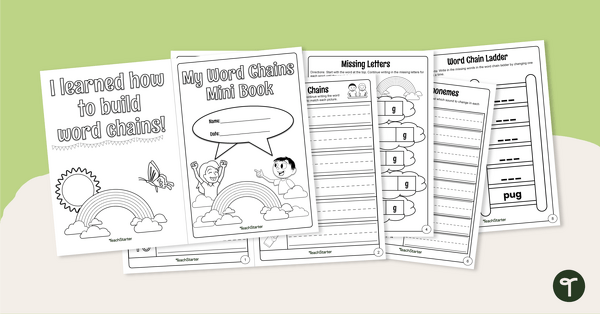
Word Chains Mini-Book
Practise spelling CVC words and manipulating their phonemes to create word chains with this fun-sized mini-book.
- Plus Plan

Which Phoneme Is Missing? Interactive Activity
Create word chains using CVC words with this engaging drag-and-drop phonics activity.
- Plus Plan
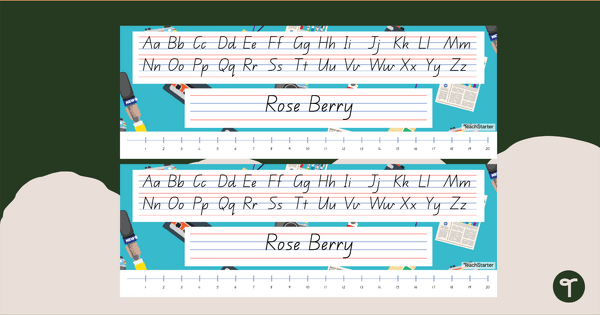
Journalism and News-Themed Editable Desk Name Plate
Help your students feel at home on the first day of a new school year with these customisable desk name plates to match your classroom theme.
- Plus Plan
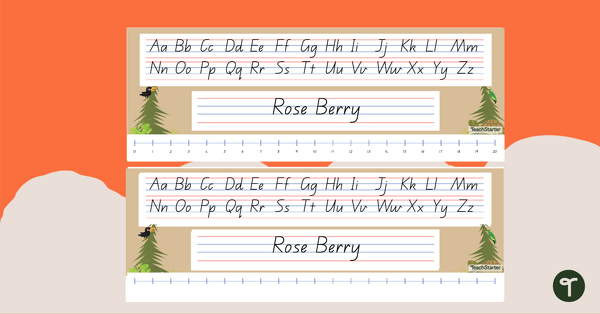
Animal-Themed Desk Name Plates
Create individualised desk name plates using this editable Animal-themed desk name plate template.
- Plus Plan
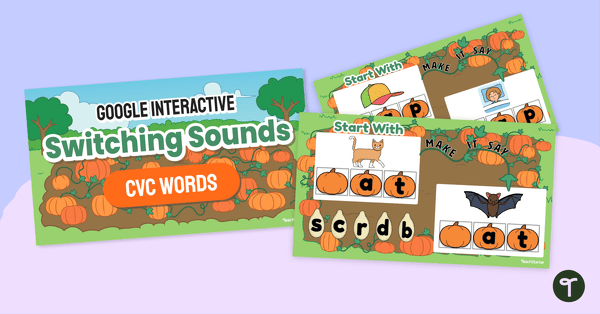
Switching Sounds in CVC Words - Interactive Activity
Manipulate onsets to create new words with this interactive phonics resource.
- Plus Plan
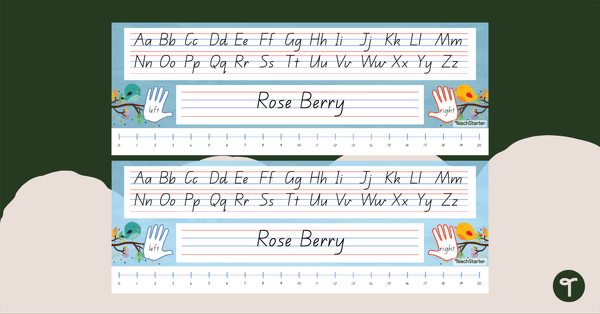
Friends of a Feather-Themed Editable Desk Name Plates
Create individualised desk name plates using this editable Friends of a Feather-themed desk name plate template.
- Plus Plan
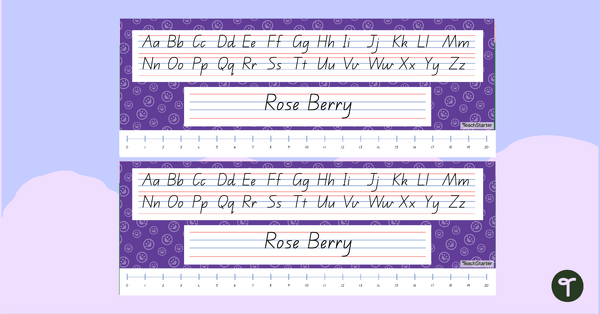
Purple Emoji-Themed Editable Desk Name Plate
Help your students feel at home on the first day of a new school year with these customisable desk name plates to match your classroom theme.
- Plus Plan
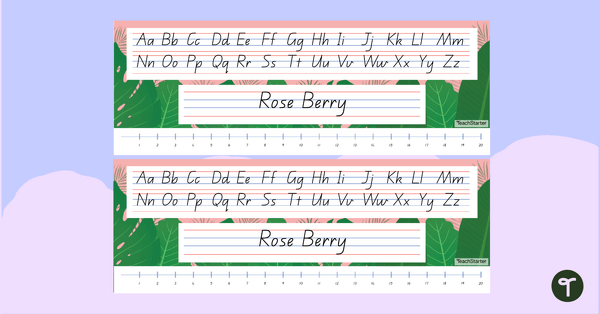
Lush Tropical Plants-Themed Editable Desk Name Plates
Create individualised nature-inspired Lush Tropical Plants-themed desk name plates for your students this school year.
- Plus Plan

Ancient Rome-Themed Desk Name Plates
Help your students feel at home on the first day of a new school year with these customisable desk name plates to match your chosen focus country.
- Plus Plan
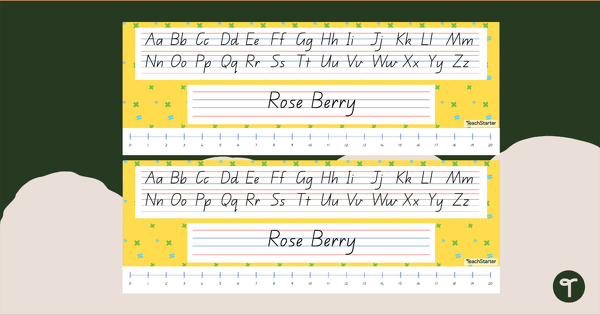
Maths Pattern-Themed Editable Desk Name Plates
Get your students in the mood for learning at the start of a new school year with these customisable and editable Maths Pattern-themed desk name plates.
- Plus Plan
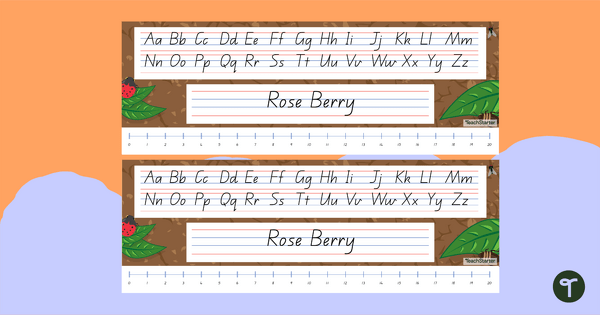
Mini Beast-themed Editable Desk Name Plates
Create individualised desk name plates using this editable Mini Beast-themed desk name plate template.
- Plus Plan
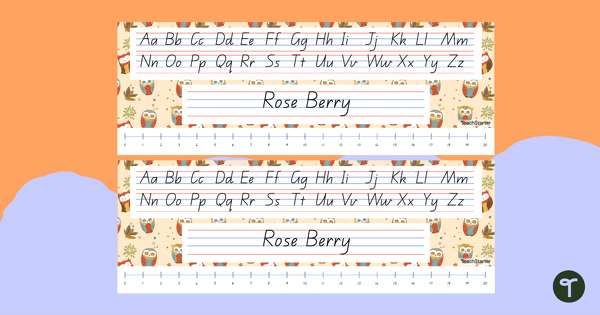
Owl Pattern-themed Editable Desk Name Plates
Create individualised desk name plates using this editable Owl Pattern-themed desk name plate template.
- Plus Plan
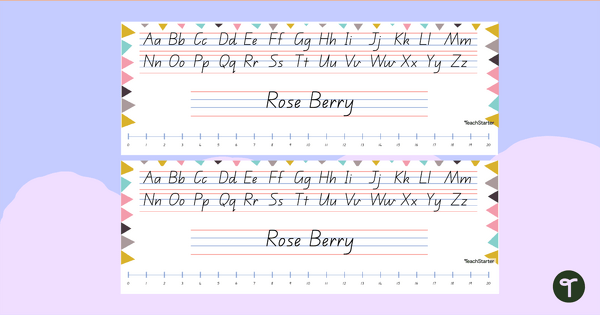
Pastel Flag Themed Editable Desk Name Plates
Create calming student name plates with these Pastel Flag inspired customisable desk name plates.
- Plus Plan
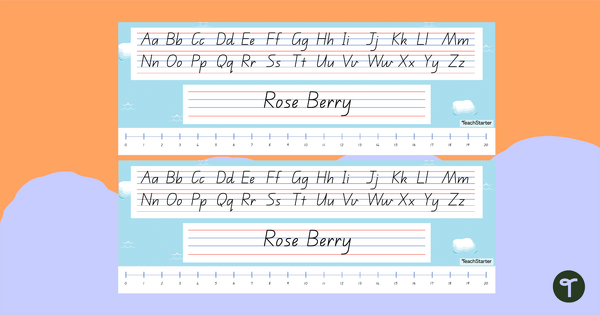
Penguin-Themed Desk Name Plates
Create individualised desk name plates using this editable Penguin-themed desk name plate template.
- Plus Plan
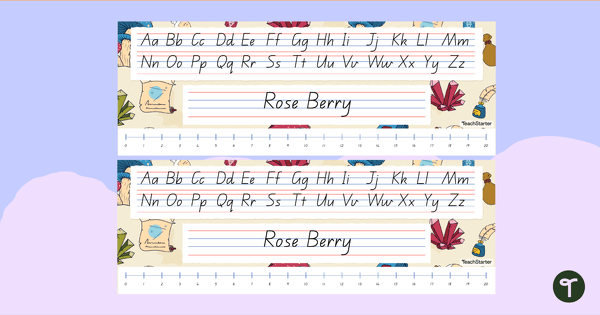
Sorcerer Supplies-Themed Editable Desk Name Plate
Help your students feel at home on the first day of a new school year with these customisable desk name plates to match your classroom theme.
- Plus Plan
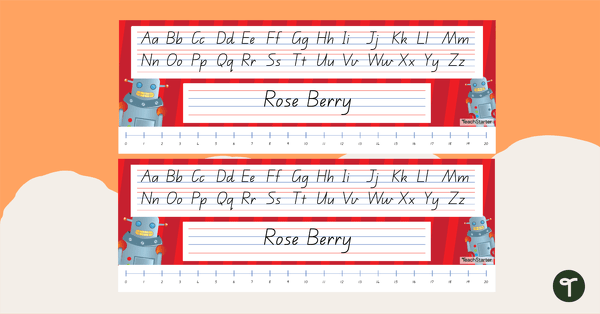
Robot-Themed Editable Desk Name Plate
Help your students feel at home on the first day of a new school year with these customisable desk name plates to match your classroom theme.
- Plus Plan
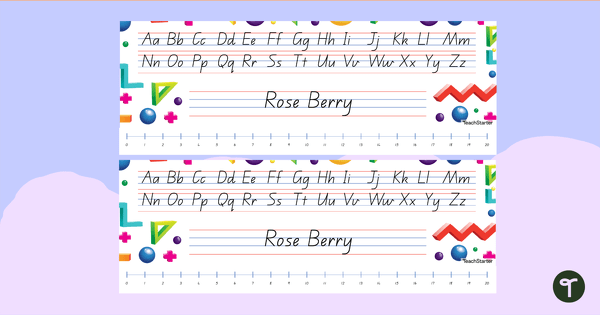
Retro-Themed Editable Desk Name Plates
Make custom name plates for your students with these affirmations-themed desk name plates.
- Plus Plan
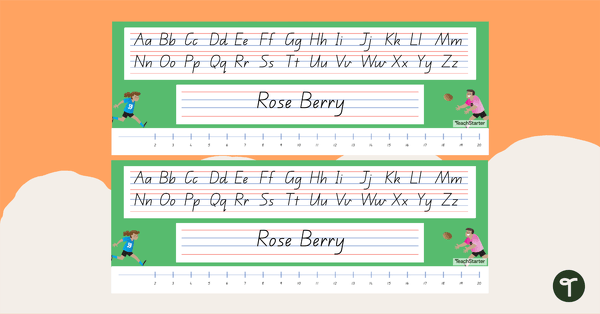
Rugby-Themed Editable Desk Name Plate
Help your students feel at home on the first day of a new school year with these customisable desk name plates to match your classroom theme.
- Plus Plan
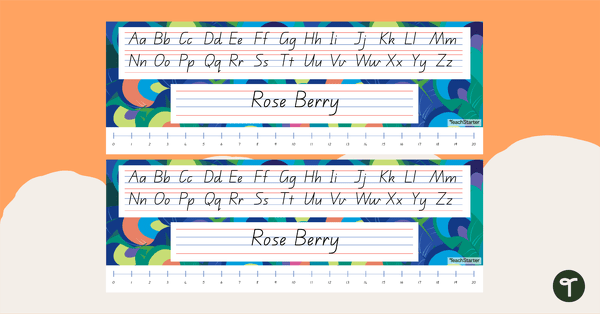
Proud Peacock-themed Editable Desk Name Plates
Create individualised desk name plates using this editable Proud Peacock-themed desk name plate template.
- Plus Plan
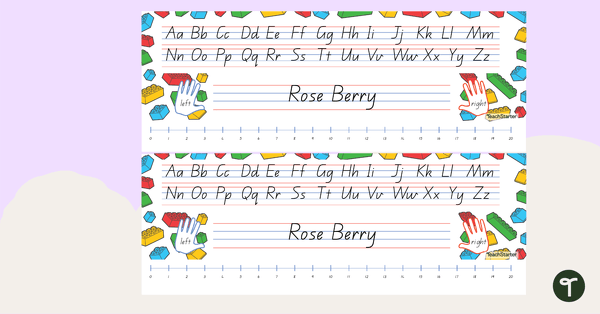
Block Beasties-Themed Editable Desk Name Plate
Help your students feel at home on the first day of a new school year with these customisable desk name plates to match your classroom theme.
- Plus Plan
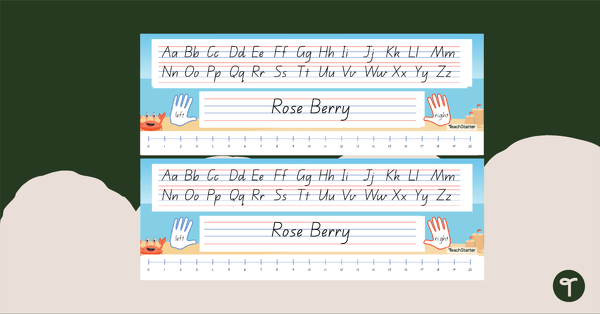
Beach-Themed Editable Desk Name Plates
Create individualised nature-inspired Beach-themed desk name plates for your students this school year.
- Plus Plan
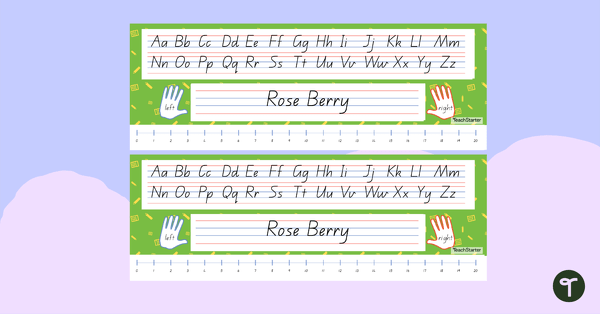
Calculators-Themed Editable Desk Name Plates
Get your students in the mood for learning at the start of a new school year with these customisable and editable Calculators-themed desk name plates.
- Plus Plan
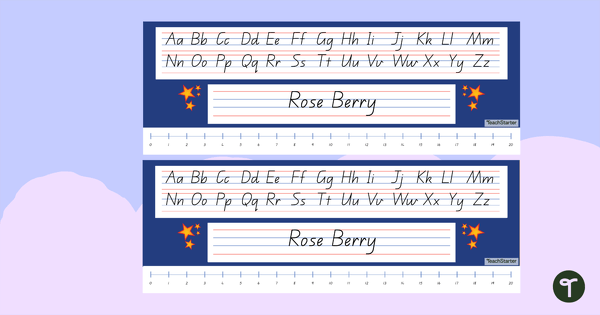
Hollywood-Themed Editable Desk Name Plate
Help your students feel at home on the first day of a new school year with these customisable desk name plates to match your classroom theme.